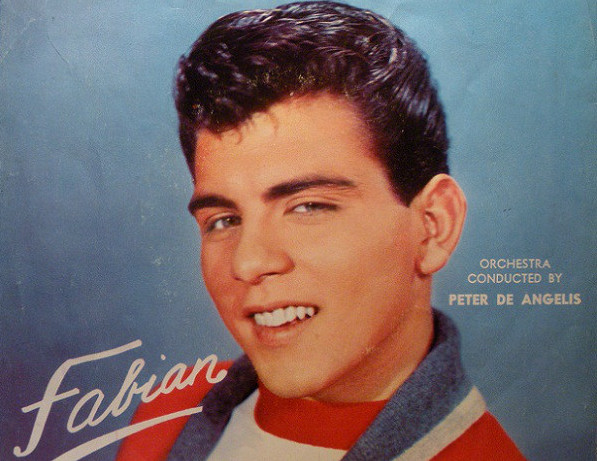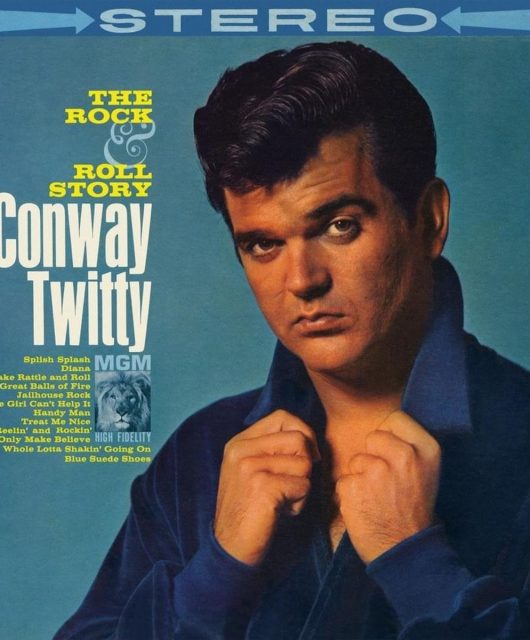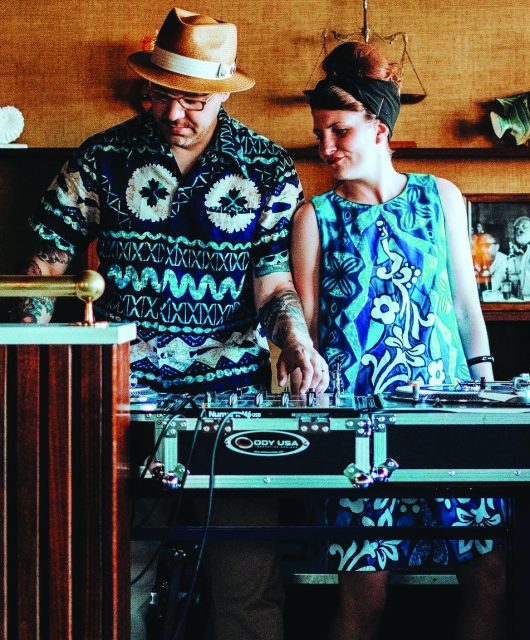They had the good looks, but were their records up to scratch? Rik Flynn reflects on a few of the biggest 45s of the teen idol era…
While a big wave of pop music-peddling teen idols definitively rose to prominence as rock’n’roll was waning in popularity, they existed in some form or other a fair bit before the symbolic moment when Elvis packed his bags and headed off to the army. When Presley returned to the charts, the pompadours were very much still on proud display, but the essence of rock’n’roll’s spirit was ultimately absent, watered-down to passing references and masquerading in a far more sanitised – society-friendly – version of the original maverick sound and attitude.
Elvis was, of course, the ultimate idol, loved by teens everywhere, but he doesn’t feature here. In fact, we’ve pretty much avoided any of those performers considered as real rock’n’rollers, bar Johnny Burnette’s career-boosting dalliance with the softer, string-drenched outpourings that arrived in the 60s when the Rock’n Roll Trio had packed up. Instead this rundown is dedicated to those stars that were, for the most part anyway, totally committed – or at least marketed to – the squeaky-clean teen pop market from the start of their careers.
When the world lost Buddy in such tragic circumstances; as Jerry Lee Lewis faced scandal in the press; and with the King off to serve his country – tastes were guided in a different direction. Chuck Berry was behind bars and Little Richard had packed it all in for the Lord too – the landscape was changing.
Here, in chronological order, we offer up 20 of the most successful items brought to the world by some of the world’s best-loved teen idols – both male and female.
20 The Little White Cloud That Cried – Johnny Ray, Okeh (1951)
Perhaps it’s because he was one of the first of his kind – before teenagers had a voice and hence before the archetypal image of the ‘teen idol’ – but Johnny Ray is often forgotten amongst their ranks. Unlike many of his fellow heart-throbs, Dallas-born Ray wrote his own songs, including this impassioned croon. The silver lining came in the form of a Billboard No.2. Ray would have been miffed to miss out on the top spot, were it not for the other side of this record – his version of Churchill Kohlman’s Cry – that took that honour, a double whammy.
19 Singing The Blues – Tommy Steele, Decca (1956)
Gleefully imbibing the wave of rock’n’roll leaking out of the US, plenty of UK wannabes lined up for a piece. Tommy Steele was one of the first, arriving two years before Cliff Richard’s seminal Move It. Debut single Rock With The Caveman may have slightly aggravated the parents of Britain in 1956, and follow-up Doomsday Rock, a distant cousin of US rock’n’roll, was at least a shadowy affair, but his third was clearly primed for the charts. Singing The Blues, a cover of Marty Robbins’ countrified US hit of around the same time, was far nearer teen pop.
18 Teen-Age Crush – Tommy Sands, Capitol (1957)
Chicago-born charmer Tommy Sands was managed by Col Tom Parker, Elvis’ manager, from his early teens, who signed him up to RCA. Sands learnt the ropes on the radio and with his high school band, but found overnight success having starred as ‘The Singing Idol’ in one episode of US TV series Kraft Television Theatre in January 1957. It was this jazzy pop-rock tune that Tommy sang on that show and, released through Capitol, it brought him a Billboard No.2 hit. Sands would go on to sign a contract with 20th Century Fox and star in 1958 movie Sing, Boy, Sing.
17 Diana – Paul Anka, ABC-Paramount (1957)
From choirboy to teen idol, Canadian singer Paul Anka cut his teeth with first group The Bobby Soxers, before heading to LA hungry for a record company audition. A debut single on Modern set him in motion, before he took off with this squeaky clean pop item on ABC-Paramount, sliding nonchalantly to No.1 in the US, UK and Canada. Touring with the ‘Cavalcade of Stars’, Anka shared stages with artists including Chuck Berry and Buddy Holly, the latter of whom he would end up writing songs for. After revivals in the 70s and 80s, Anka still fills venues today.
16 Poor Little Fool – Ricky Nelson, Imperial (1958)
Gaining notoriety at an early age thanks to family TV show The Adventures Of Ozzie And Harriet, Nelson was one of the better singers of the genre, reflected in his record of hits. His first single, a cover of Fats Domino’s I’m Walkin’, took him straight into the Top Five in 1957. Nelson’s first No.1, Poor Little Fool, written by a 17-year-old Sharon Sheeley, arrived in 1958 shifting millions and was one of a dozen hits from 1958 and ’59 (beating Elvis’ 11). Ricky’s fame led to a co-starring role with John Wayne in 1959’s Rio Bravo and a Golden Globe nomination.
15 Splish Splash – Bobby Darin, Atco (1958)
A disposable novelty it may be, but Darin’s frivolous hit is simply too big to ignore, making a huge – er – splash, in 1958. Existing snug within the preened peripheries of rock’n’roll, this playful earworm supposedly came into being at New York DJ Murray ‘The K’ Kaufman’s house, after his mother Jean suggested the title and opening line. With lyrics finalised, the party is in effect in the safety of Darin’s living room. Passing references to Little Richard and Buddy Holly hinted at the vapours of rock’n’roll, but ultimately this is pure teen vanilla.
14 I’m A Man – Fabian, Chancellor (1958)
Fabian never set out to be famous, but grew to embody the archetypal teen-pop sensation. Story goes that a 14-year-old Fabiano Forte was ‘discovered’ by Chancellor Records boss Bob Marcucci while on his porch after his father had been taken to hospital with a heart attack. Marucci, on the search for potential stars, (inappropriately) gave Forte his card. Recast as ‘The Fabulous One’, with a newly-fashioned quiff, Forte soon found himself on American Bandstand, later achieving success with a succession of monster hits.
13 Just A Dream – Jimmy Clanton, Ace (1958)
From Clanton’s syrupy meandering tenor and those love-letter lyrics through to the hazy backing harmonies, this is the model swoon-inducing teen ballad. Through the early 60s Clanton struck gold with a succession of hits that encompassed this saccharine soundscape with everything from swooping harps to grand brassy productions. Aside from this US No.4, Top 10 hits included Go Jimmy Go (1960) and another classic teen idol smash, Venus In Blue Jeans (1962), the tale of ‘a fairytale come true’ with ‘a teenage goddess from above’.
12 Endless Sleep – Marty Wilde, Phillips (1958)
He was the unassuming ukelele-playing Reg Smith before Brit music impresario Larry Parnes swooped in and renamed his next big thing ‘Marty Wilde’. Backed by The Wildcats, a version of Jody Reynolds’ teen-tragedy song Endless Sleep arrived in 1958 and immediately made an impression, reaching a none-too-shabby No.4 in the UK. Soon girls across the nation were throwing themselves at Marty and his fate as a teen idol was sealed. His next release, a cover of Ritchie Valens’ Donna, went one higher and his run of success continued in earnest.
11 Living Doll – Cliff Richard and the Drifters, Columbia (1959)
OK, so Cliff And The Drifters’ Move It is a bona fide UK rock’n’roll classic, but by the time of their third 45, the collars had come down in favour of a far more family-friendly image. Initially, Cliff loathed the attenuated sound of this rock-lite item, but was contracted to sing it in teen flick Serious Charge. As a result, Cliff and his band slowed the tempo, completely disposing of any pretence of rock’n’roll that the Lionel Bart-original purported to have, for a more country feel. With grit offloaded, what remained was a starry-eyed surefire No.1.
10 Venus – Frankie Avalon, Chancellor (1959)
Another of the ultimate fresh-faced idols to arrive via Chancellor, Frankie Avalon had his eyes set on fame from the age of 10. An accomplished trumpet player, Avalon won several of Philly’s amateur contests before joining local band Rocco And The Saints with another future idol, Bobby Rydell. Soon signed to Chancellor, Avalon turned to singing and found fame via American Bandstand, striking gold with a succession of sappy pop items – six Top 40 hits in 1959 alone – including this woozy million-selling calypso, backed by a full orchestra.
9 Tall Paul – Annette Funicello, Gala Disney (1959)
Annette Funicello’s squeaky-voiced, brass-heavy novelty ode to a sky-scraping lover, this harbours a whole lot more energy than the slurred laments so often associated with the teen idol pantheon. While many of her male counterparts went on to the big screen having made their names in pop, Funicello started her career as a cast member of the Mickey Mouse Club and shifted into pop music later on. The sugar-coated lyrics are about as close to 50s high school cliché as you can get: “Tall Paul is my love/ Tall Paul is my dream/ He’s the captain of the high school football team”.
8 A Teenager In Love – Dion and the Belmonts, Laurie (1959)
The teen idol was very much a manufactured ideal often imprinted on artists like Dion. “I was a part of that because I was a good looking lad,” the singer said. “But you start getting into this kind of surface thing.” Although straddled by The Belmonts, Dion certainly fitted the bill with 1959’s No.5 A Teenager In Love, a crooner purpose-built for the teens by Pomus & Shuman. Another of Dion’s big hits, The Wanderer, was presented in the 1961 movie Twist Around The Clock as a clean-cut, very white affair, when in fact Dion was backed up by black musicians on the record itself.
7 Swingin’ School – Bobby Rydell, Cameo (1960)
Another star from Philadelphia, Bobby Rydell was a pro drummer before he even reached double figures, becoming a regular face on TV from 1950. At just 19, he became the youngest person ever to enjoy top billing at New York’s infamous Copacabana and soon hit his stride with a run of million-sellers including Volare, Fatty, Fatty, We Got Love, Wild One and this pop-rock item from the soundtrack to 1960 flick Because They’re Young. His impact cannot be underplayed: the school from the movie Grease was named Rydell High in tribute to him.
6 Dreamin’ – Johnny Burnette, Liberty (1960)
Many of Johnny Burnette’s fans had their noses put out of joint to see their feral hero shift lanes into the teen pop market. After the Rock’n Roll Trio called it a day, Johnny and brother Dorsey released as The Burnette Brothers and managed to score writing gigs with both Ricky Nelson and Roy Brown. Johnny’s solo days began in 1960 with Freedom, but it wasn’t until a new inking with Liberty that his brooding tenor was given the full teenage idol treatment. His third Liberty single Dreamin’ took him to a million-plus sales and a Billboard No.11.
5 Little Bitty Pretty One – Frankie Lymon, Roulette (1960)
New York City doo-woppers Frankie Lymon & The Teenagers won big with their debut single Why Do Fools Fall In Love?. Having deserted his group for a solo career, the cherubic Lymon went on to become the first black teenage pop star. Originally a hit for both Bob Crosby and Ella Fitzgerald, Frankie performed his chirpy version of Goody, Goody on Ed Sullivan’s show in 1957. On record it retained The Teenagers’ name, helping it to No.20 in 1957, while his biggest success under his own steam alone came with a cover of Bobby Day’s Little Bitty Pretty One, a No.58 in 1960.
4 A Thousand Stars – Billy Fury, Decca (1960)
Billy Fury is, of course, well-respected as one of the UK’s finest rock’n’roll singers and a hyper-talented songwriter at that, but nonetheless this blond-haired, blue-eyed boy’s chiselled good looks were inescapable, as was his inevitable teen idol status. As well as his rockier numbers, Billy cut a fine dash when it came to balladry as this 1959 UK hit confirms. “A thousand stars in the skies, like the stars in your eyes,” croons Fury, as we’re taken on a dewey-eyed journey of teen love to rival the best his American counterparts had to offer.
3 Sixteen Reasons – Connie Stevens, Warner Bros (1960)
Aligning nicely with the stock teen lament, here backing harmonists count their way up to sweet sixteen as Connie lists the cutesy reasons for her affections towards her lover. Sixteen Reasons was Stevens’ biggest single, courting an impressive No.3 in the Billboard, bettering her novelty single Kookie, Kookie (Lend Me Your Comb) from the previous year, in which she does her best to draw attention away from her beau’s incessant preening. That duet with Edd Byrnes, star of US TV series 77 Sunset Strip (a show in which Stevens had appeared) managed No.4.
2 Take Good Care Of My Baby – Bobby Vee, Liberty (1961)
Bobby Vee first made his mark in awkward circumstances having occupied the undesirable position as replacement singer on the Winter Dance Party Tour after its stars – Buddy Holly, the Big Bopper and Ritchie Valens – tragically perished in that infamous plane crash. Soon after, Vee and his band managed a local hit with their debut on Soma, the Holly-esque Suzie Baby, written by Vee himself. He was skyward-bound from there, recording just shy of 40 Top 100 hits between 1959 to 1970. His biggest hits include Rubber Ball, Run To Him and this all-time classic.
1 Runaway – Del Shannon, Big Top (1961)
Whilst he’s now considered one of the more reputable amongst their ranks, former carpet salesman Del Shannon was nonetheless very much situated within the teen idol camp at the time. This hook-laden slice of upbeat melancholia was his biggest hit, but still sparked a prolonged run of success for Shannon. With smash hits such as Runaway, Hats Off To Larry and Little Town Flirt firing the starting gun for his career, unlike many of his peers Shannon managed to ride out the British Invasion and was one of the most successful artists of the 60s, particularly in the UK.






